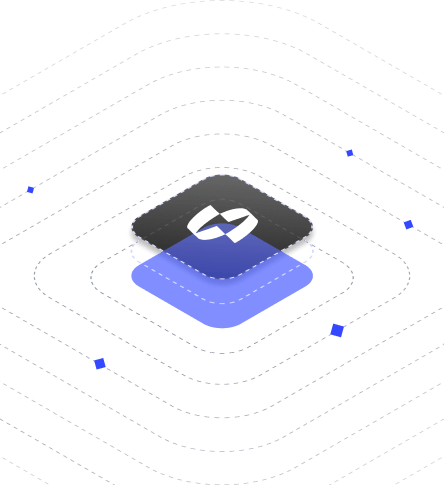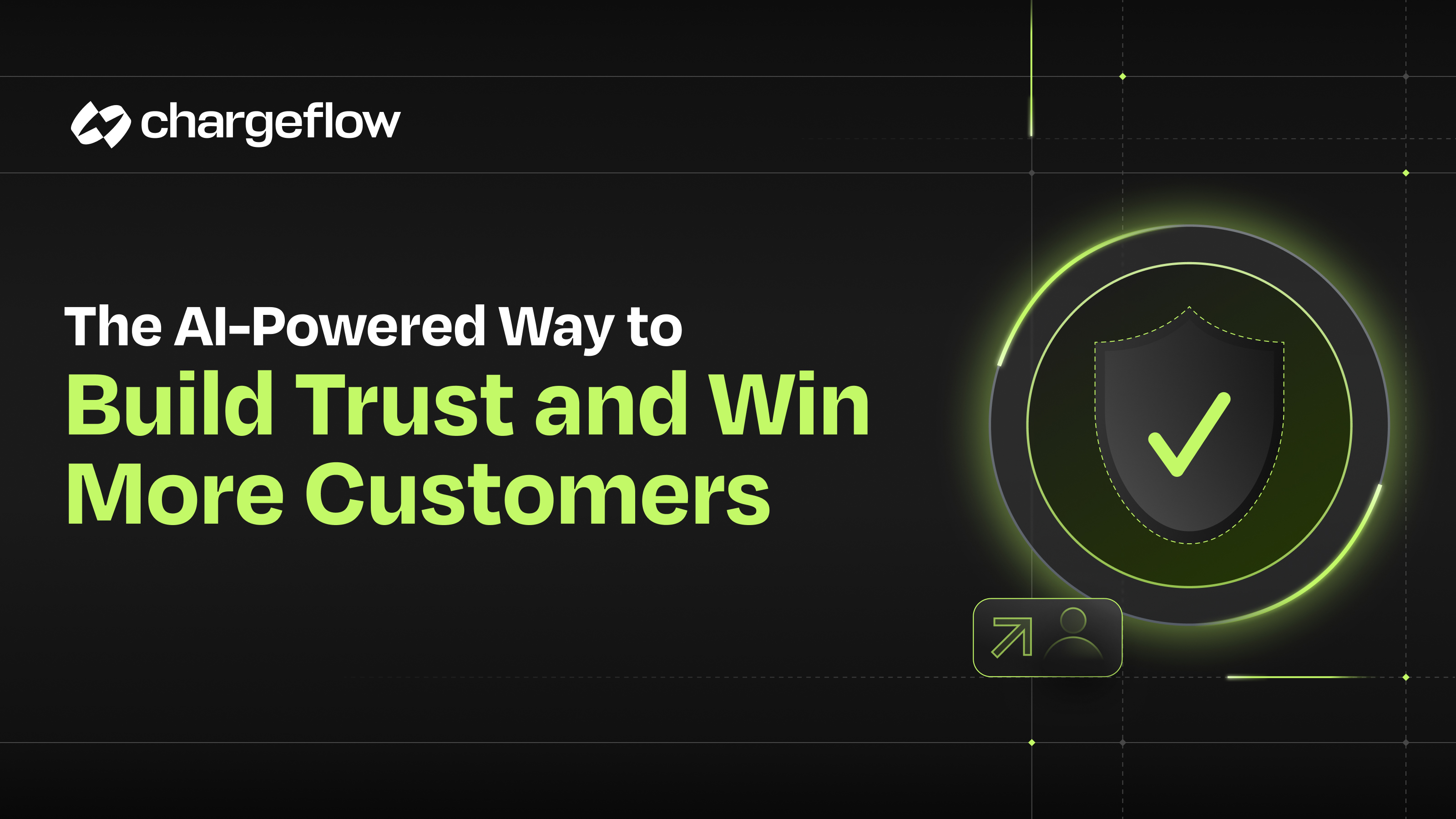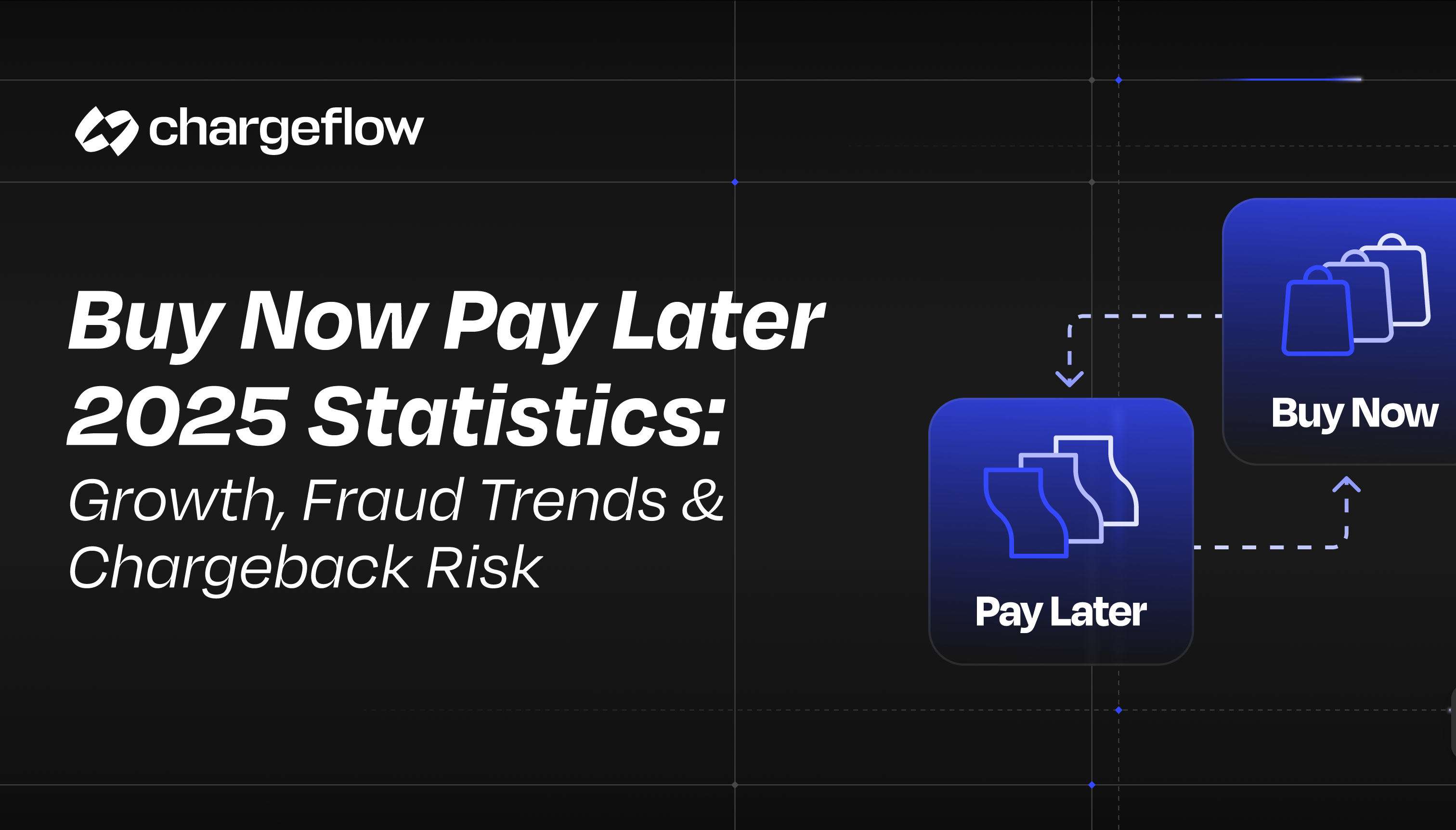Understanding ACH Payments, Disputes, and Chargebacks

Chargebacks?
No longer your problem.
Recover 4x more chargebacks and prevent up to 90% of incoming ones, powered by AI and a global network of 15,000 merchants.
Learn the essentials of ACH payments, disputes, returns, and chargebacks, plus tips for merchants to manage and resolve disputes effectively.
Ever wonder why an unexpected withdrawal appeared on your bank statement? Here’s a theoretical scenario to consider:
Jimmy’s SaaS Journey
With great success, Jimmy operates a SaaS platform offering premium design software for small businesses. To facilitate the purchasing experience for his clients and cut down on transaction charges, he decided to provide ACH/wire payments as an option, seeing that most of his customers are businesses that prefer this type of payment method. Now, customers can transfer funds straight from their accounts into their accounts, while both parties pay fewer fees than credit card charges for the same transaction amounts.
Everything was running smoothly until one day, Jimmy observed that his business bank account was being charged for a sizable reversal that he had not anticipated. Puzzled and worried, he contacts his bank only to discover that a customer has raised a dispute with their banks, claiming that the ACH debit was fraudulent.
How can SaaS and eCommerce merchants like Jimmy avoid such disruptions?
What is the Automated Clearing House (ACH)?
The Automated Clearing House (ACH) is an electronic network for financial transactions in the United States. By enabling direct bank-to-bank transfers, ACH allows individuals and businesses to send and receive funds without the need for physical checks, credit cards, or debit cards. Governed by the National Automated Clearing House Association (NACHA), the ACH network is a part of the US financial infrastructure.
ACH transactions are used for everything from payroll to bill payments and online purchases, making it essential for SaaS companies to understand the process and how to manage potential issues like disputes and returns.
Overview of ACH Transactions
“In 2020, the ACH Network processed 26.8 billion payments, marking a 10.8% increase from the previous year, showcasing the growing reliance on electronic transactions.” — Nacha ACH Network Volume Reports
How does ACH affect your daily life? ACH transfers are widely used for various everyday transactions, such as:
- Direct Deposit: Employers deposit salaries directly into employees’ bank accounts.
- Bill Payments: Individuals pay utilities, mortgages, and other bills by authorizing ACH debits.
- Peer-to-Peer Payments: Apps like Venmo and Cash App utilize the ACH network for money transfers.
- Online Purchases: Businesses receive payments directly from customers’ bank accounts.
Types of ACH Transactions
ACH transactions are each identified by three-letter codes that refer to different transaction types:
- PPD (Prearranged Payment and Deposits): Used for pre-authorized recurring billings.
- TEL (Telephone-Initiated Entry): Known as check-by-phone transactions.
- WEB (Web-Initiated Entry): Widely used in eCommerce.
Understanding these types of ACH transactions is crucial for businesses accepting ACH payments to help prepare for potential issues.
ACH in B2B SaaS Payments
In the B2B SaaS industry, ACH payments are becoming increasingly popular for handling recurring subscription payments and vendor transactions. Unlike credit card payments, ACH offers lower transaction fees, making it a more cost-effective option for businesses that rely on frequent or larger transactions. This is especially true for SaaS, where predictable, recurring payments are considered the norm.
Here's why ACH is an ideal fit for SaaS businesses.
Benefits of ACH for SaaS
Recurring Payments
ACH handles automatic withdrawals for monthly or yearly renewals making it an ideal choice for the SaaS business model. With ACH, payments can be easily scheduled, making sure renewals are seamless. This is a huge benefit for both business and customer, ensuring the experience is hassle-free.
Fewer Payment Failures
ACH payments help you avoid the pitfalls due to expired or lost credit cards. Bank accounts don't expire, therefore, ACH helps ensure continuity, which allows SaaS companies to avoid the troubles associated with credit card billing. Fewer transactions mean more cash flow, which in turn means long-term revenue stability.
Challenges for SaaS Companies Using ACH
There are clear advantages for B2B SaaS companies, but they face their own set of challenges. Companies need to be aware of these drawbacks so they can effectively manage their cash flow and minimize potential disruptions accordingly.
Longer Payment Cycles
ACH transactions typically take a few days to clear which can be detrimental for SaaS companies especially when dealing with large enterprise clients and could disrupt cash flow. Those SaaS businesses that rely on quick access to funds can find themselves facing challenging delays, which can hinder cash flow forecasting and regular day-to-day operations.
ACH Disputes
The process of handling ACH disputes can be complicated and costly — especially for small B2B SaaS businesses which can lead to substantial revenue loss (and operational pain) if it's not resolved quickly. ACH disputes don't offer the same appeal procedures as credit card disputes, therefore SaaS companies need to work directly with clients to resolve issues, which can add a hefty administrative load.
To sum up, ACH payments offer many significant advantages for SaaS companies like lowering costs and ensuring continuity. However, it's important to understand and prepare for the longer processing times of potential disputes to help SaaS providers make the most of ACH as a payment option while mitigating its challenges.
Understanding ACH Payments
ACH payments are direct bank-to-bank transactions, often called paperless checks or online checks. They offer several advantages compared to credit card payments and other methods.
Key Benefits of ACH Payments
- Lower Fees: ACH transactions generally have lower fees compared to credit card payments. If you're a SaaS company processing many recurring payments, the savings can be substantial over time, offering you a cost-effective option for subscription billing.
- No Expiration Date: Bank accounts don’t expire like credit cards, therefore there is no chance for payment interruptions caused by outdated payment information. ACH payments can maintain consistent cash flow without the need to worry about frequent updates like credit card payments.
- Efficiency and Reliability: ACH transfers provide a speedy means of receiving paychecks and settling bills. A direct bank-to-bank transfer system to reduce manual intervention and ensure businesses receive funds more reliably.
Potential Risks of ACH Payments
Now that we've outlined the benefits, ACH payments do have a few risks that businesses should be aware of:
- Slower Processing Times: ACH payments can take several days to clear, which is important to keep in mind with cash flow. Companies needing immediate funds for operational expenses need to be aware of this. If you depend on rapid turnover of funds, ACH's slower processing time may pose an issue.
- Limited Anti-Fraud Measures: ACH payments require only an account and routing number, lacking additional security found in credit card transactions with CVV codes, or multi-factor authentication. This means ACH is more susceptible to fraud if account details are compromised. This is why it is essential for businesses choosing ACH must implement additional security protocols to protect sensitive information.
ACH Disputes and Their Impact on SaaS Companies
An ACH dispute arises when a party involved in an ACH transaction raises a concern over the legitimacy, accuracy, or authorization of the transaction. Disputes can involve bank customers, banks, and merchants, and they can significantly disrupt a business. Unlike credit card disputes, ACH disputes are typically final, meaning businesses need to take proactive measures to prevent them.
Valid Reasons for ACH Disputes
Customers can initiate an ACH dispute for valid reasons defined by NACHA rules including:
- Unauthorized Transactions: The customer did not authorize the transaction (e.g., due to fraud or identity theft).
- Incorrect Amounts: The transaction amount differs from what was agreed.
- Duplicate Transactions: The customer was charged more than once for the same transaction.
- Non-Receipt of Goods or Services: Payment was made, but goods or services were not received or not as described.
- Reversal Errors: A requested reversal was processed incorrectly or not at all.
- Canceled or Revoked Authorization: A recurring transaction was processed after authorization was canceled.
- Inaccurate Account Information: The transaction used incorrect or outdated account details.
Invalid Reasons for ACH Disputes
It is important to understand that not all reasons are valid for filing a dispute, and misusing the ACH dispute process can lead to penalties. Invalid reasons include:
- Buyer’s Remorse: Changing one’s mind about a purchase is not valid.
- Personal Grievances: Disputes unrelated to the transaction.
- Delivery Delays: Delays are not grounds for a dispute if the merchant fulfills obligations.
- Avoiding Payment: Filing a dispute to avoid paying for a legitimate transaction is fraudulent.
- Forgetting a Payment: Forgetting about a recurring payment is not a valid reason.
Important to note: Only disputes related to the payment process itself are valid, not issues with the product or service.
The Impact of ACH Disputes on Businesses
Can your business withstand the financial strain caused by multiple disputes?
ACH disputes can have significant consequences for merchants:
- Loss of Revenue: Funds may be withdrawn from the merchant’s account.
- Cash Flow Disruptions: Disputes affect cash flow forecasting.
- Additional Fees: Merchants may incur fees for handling disputes.
- Reputation Damage: High dispute rates can harm relationships with banks and customers.
- Operational Challenges: Banks may impose transaction limits or hold funds longer.
This is where having a proactive dispute management system can help mitigate these risks. By identifying potential issues early and automating dispute resolution processes, merchants can avoid significant revenue loss and operational disruptions.
The ACH Dispute Process
When a customer initiates an ACH dispute, the process typically involves:
- Notification: The customer notifies their bank of the issue.
- Investigation: The bank gathers information, including transaction details and authorization records.
- Dispute Resolution: The bank determines the validity and takes action, such as reversing the transaction.
- Communication: The bank informs the customer and possibly the merchant of the outcome.
Businesses can prevent many of these issues by using automated dispute management systems like Chargeflow, which can help detect issues early and automate resolution processes, ensuring minimal disruptions.
Timeframes for ACH Disputes
Time limits for filing ACH disputes are essential for both consumers and businesses to understand. These timeframes help maintain the integrity of the dispute process ensuring responses are timely:
- Consumers generally have 60 days to file a dispute. This is an extended period to help individual customers receive sufficient time to review their bank statements and identify any unauthorized or incorrect transactions.
- Businesses on the other hand typically have a shorter window to file which is within 24 hours after noticing an issue. This means businesses need to monitor their transactions closely and address any issues immediately. For B2B SaaS companies it is recommended to set up regular transaction reviews to ensure any potential issues are flagged within this limited time.
Responding to ACH Disputes as a SaaS Company
Unlike credit card disputes, ACH disputes are final, and there is no formal process to appeal (Arbitration). If a customer successfully disputes a payment, SaaS companies must work directly with the customer to resolve the situation. This means merchants should take a direct approach to resolve the matter with the customer, foster good relationships, and prevent future disputes.
Steps for Merchants:
- Contact the Customer: To start, reach out directly to understand the issue. Foster open communications to clarify misunderstandings, review the complaint, and aim to resolve the issue before it escalates.
- Address the Dispute: If the complaint is valid, issue a refund or correct the transaction. By addressing the issue quickly, you can likely avoid repeated disputes and gain trust with your customers.
- Review and Prevent: Analyze the dispute and identify patterns to prevent future occurrences. This may require adjusting billing practices, enhancing transaction records, or strengthening authorization protocols to prevent similar issues from arising in the future.
Read more about responding to or contesting an ACH Direct Debit Dispute as a merchant.
ACH Returns and Chargebacks
Understanding the differences between ACH disputes, returns, and chargebacks is essential for managing payments.
ACH Returns
An ACH return occurs when a payment fails to process. This can be due to reasons such as insufficient funds, a closed account, incorrect information, or an unauthorized transaction. When an ACH return occurs, the bank sends a return code indicating the reason. Return fees typically range from $2 to $5 and are paid by the responsible party.
ACH Return Flow
The return process involves several steps, which are dependent on the reason for the return as well as the bank's specific procedures:
- Notification of Change (Optional): If account details have changed such as a routing number, the bank can issue a notification of change to update the merchant's records.
- Request for Permission to Return (Optional): The Bank may request supporting documents before agreeing to process the return, allowing the merchant to verify details.
- Information Supplied (Optional): The merchant may be asked to provide documents to clarify or support the validation of the transaction.
- Notification of Chargeback: In the case where the return escalates, the issuing bank may initiate a return, debating the merchant's account.
- Chargeback: The merchant’s account is debited.
Retry: Depending on the reason code, merchants may retry the payment, for instance in a case of insufficient funds. Merchants should be sure to adhere to ACH network guidelines to avoid penalties for excessive retries.
Deciding to Retry a Payment
Use the following table to determine if you can retry a returned ACH Direct Debit payment:
Common ACH Return Reason Codes

Note: Repeatedly retrying transactions that cannot succeed may result in fines from NACHA and could lead to being blocked from sending new ACH transactions.
ACH vs. Chargebacks
Comparison Table

Rules and Regulations
NACHA oversees the ACH network, setting regulations to ensure secure and efficient transactions. Compliance is mandatory.
NACHA Rules for Disputes
According to NACHA, there are only three allowable reasons for a customer to dispute an ACH Direct Debit charge:
- Unauthorized Transaction: The transaction was never authorized or authorization was revoked.
- Incorrect Amount or Date: The transaction is for a different amount or processed earlier than agreed.
- Improper Processing: The transaction was improperly processed, such as a duplicate payment.
Note: Issues with the product or service quality are not valid reasons for an ACH dispute.
“Adhering to the Nacha Operating Rules is essential for all participants in the ACH Network to ensure the safety, security, and reliability of transactions.”— Jane Larimer, President and CEO of Nacha Source: Nacha CEO on the Importance of ACH Network Compliance
Compliance Tips for Businesses
For merchants to remain complaint, they should:
- Obtain Proper Authorization: Secure clear, verifiable consent.
- Maintain Accurate Records: Keep detailed transaction documentation.
- Provide Transparent Information: Clearly state terms, pricing, and policies.
- Stay Informed: Regularly update knowledge of NACHA rules.
Summed Up
For B2B SaaS merchants, understanding the intricacies of ACH disputes, returns, and chargebacks is crucial to minimizing operational disruptions and revenue loss. By proactively managing disputes and adhering to NACHA regulations, businesses can protect their cash flow and reputation.
Take control of your ACH transactions and protect your business.
Get started today to automate dispute management, safeguard your revenue, and streamline your operations.

Chargebacks?
No longer your problem.
Recover 4x more chargebacks and prevent up to 90% of incoming ones, powered by AI and a global network of 15,000 merchants.






























.png)








